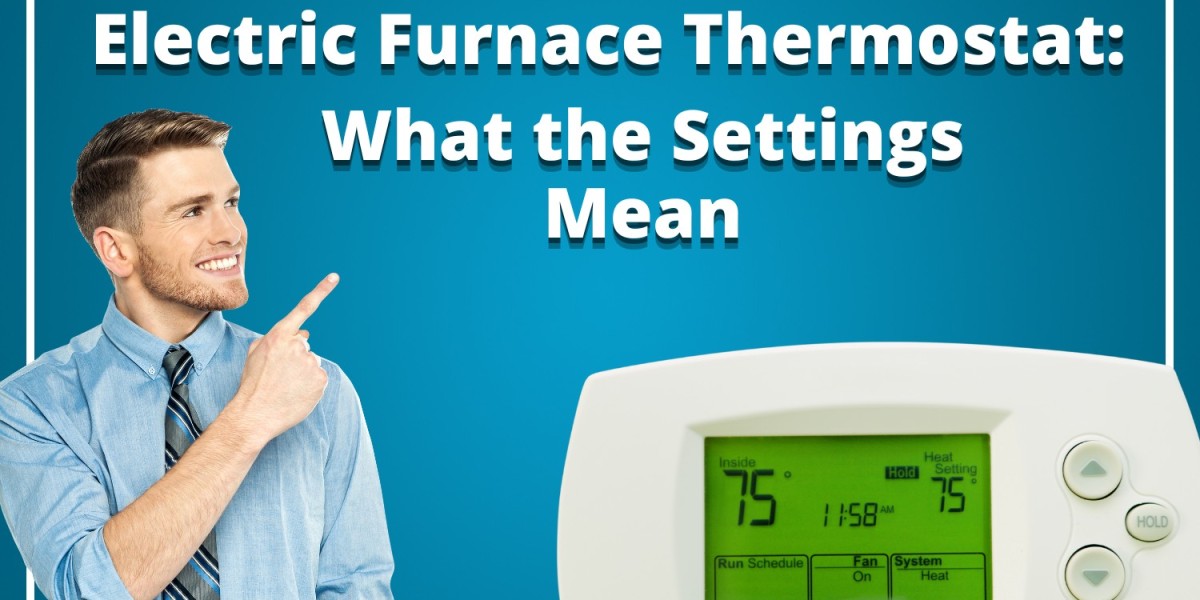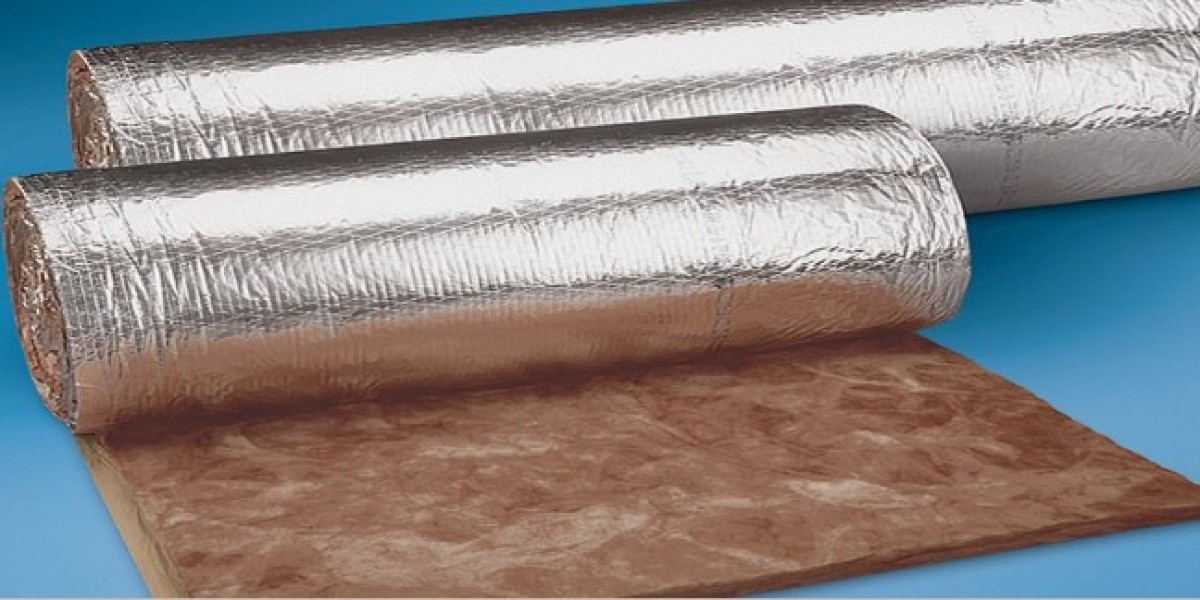At its core, an electric furnace thermostat keeps the temperature in your home in order. Oh, but the plethora of settings can create confusion so often. Basic modes like a ‘Heat’ or ‘Fan’ and, if applicable, more advanced modes such as programmable schedules or energy-efficient modes can make programming your HVAC system seem overwhelming. This blog intends to explain these settings, allowing you to get a clearer idea of what each function is and how to use it. We’ll translate the jargon, tell you what the icons mean, and help you get the most value out of your thermostat.
Read more here.
The Basic Settings
Your thermostat has three main modes: Heat (warms the home), Cool (cools the home), and Off (deactivates the system). The Fan setting governs air circulation; Auto runs the fan only when the house is heated or cooled, saving energy, while On keeps it running continuously. Temperature set points are the temperatures you want in each room; the thermostat switches heating or cooling on and off to keep them.
Check out the Outdoor Boiler Electric Thermostat.
Heat, Cool, and Off Modes:
Think of these as the main "commands" you give your thermostat.
- Heat: This tells your furnace to turn on and warm your home. Use this during colder months.
- Cool: If your home has air conditioning, this tells it to turn on and cool your home. Use this during warmer months.
- Off: This turns off both heating and cooling. It's useful when you don't need either, like during mild weather.
The Fan Setting (Auto vs. On):
This controls the blower fan that circulates air in your home.
- Auto: This is the most common and energy-efficient setting. If you're using your furnace, boiler, or air conditioner, then the fan is only on when your system is on. So it only blows air when your furnace or AC is running.
- On: This keeps the fan running all the time, around the clock. This increases air circulation and filtration but requires more energy. You might use this if you are concerned about air quality.
Temperature Set Points:
These are the temperatures you want your home to be.
- These are set using the up/down arrows or a dial.
- Setting a “Heat” temperature means your furnace will run until that temperature is achieved in your home.
- Setting a “Cool” temperature only runs your AC until your home is cooled down to that temperature.
- If you set your thermostat to 70 degrees Fahrenheit, for example, the furnace will keep running until the home reaches 70 degrees Fahrenheit. Then it will turn off. At that point, if the home's temperature drops below that point, it will restart.
Advanced Thermostat Settings
Programmable Schedules:
- Most of today’s smart thermostats let you create custom heating and cooling schedules. That means you can set it for one temperature at one time of day and another at another time of day (and on a different day of the week).
- For instance, you might set your thermostat to lower the temperature when you’re at work on weekdays and raise the temperature before you arrive home. You should have a more fluid schedule on Saturdays and Sundays.
- This feature uses your current heating settings, so your home isn’t heated or cooled to your desired temperature unless required, optimizing comfort while minimizing wasted energy.
Check this Unit Heater Thermostat from Outdoor Boiler and learn more about Programmable Thermostat.
Hold and Temporary Hold Functions:
These are characteristics that offer flexibility for those occasions when your daily routine is inconsistent.
- Hold: This function allows you to override your programmed schedule and maintain a constant temperature indefinitely. This is especially helpful if your schedule changes unexpectedly.
- Temporary Hold: This feature temporarily overrides your schedule for a certain number of hours. Once the configured period is over, the thermostat will return to its scheduled programming.
Energy-Saving Features:
These features contribute toward saving energy.
- Eco Modes: Many thermostats have an "Eco" mode that automatically adjusts the temperature to conserve energy. This mode typically sets wider temperature ranges, allowing the system to run less frequently.
- Smart Learning: Artificially intelligent smart thermostats can learn your heating and cooling habits. The small technology adjusts your heating or cooling schedule to keep things energy-efficient while bringing you the comfort you want. These thermostats sense whether you are home or away and adjust automatically.
Differential Setting (or Swing):
- The differential setting (sometimes called "swing" or "cycle rate") determines how much the room temperature can fluctuate before the thermostat activates the heating or cooling system.
- The smaller the differential, the more often the system will come on and go off to maintain a very tight temperature. This means fewer cycles and more energy savings, as a bigger differential enables a wider temperature range.
- With a 1-degree differential, for example, if you set heat to 70, the heater will turn on at 69 and off at 71. With a 2-degree differential, down would be 68, up would be 72, where the heater would turn on and off respectively.
Understanding Display Indicators: What Your Thermostat Is Telling You
Common Display Icons:
These icons serve as a quick LIA (Leaning Indicator Animation) as to where your heating and cooling lives.
- Flame Icon: This icon typically indicates that the heating system (your furnace) is currently active. When you see the flame, your thermostat is telling your system it's demanding heat.
- Snowflake Icon: Indicates that the cooling system (your air conditioner) is running. When you see the snowflake, that means your thermostat is calling for cool air.
- Fan Icon: The blower fan is running. The fan mode does NOT auto shut off if the fan icon is continuously enabled. So if it turns off and on as the flame or the snowflake, you’re in “Auto” mode.
Error Codes:
- Thermostats, especially digital and smart models, can display error codes to indicate problems. Depending on its user manual, every brand and model of thermostat has a particular code.
- Error codes can signify issues like:
- Loss of communication with the furnace or air conditioner.
- Faulty sensors.
- Low battery (for battery-powered thermostats).
- Wiring problems.
- If you’re presented with an error code, check your thermostat’s user manual or the manufacturer’s website for the meaning and potential fixes.
Humidity Readings (If Applicable):
- Some advanced thermostats include humidity sensors and show the humidity level in your home.
- Most of the time, humidity is expressed in percentage.
- High Humidity: High humidity can make your home feel hot and stuffy. It can lead to mold growth as well.
- Low Humidity: In winter, low humidity brings dry skin, irritated sinuses, and static electricity.
- If your thermostat has humidity readings, you can set one lower — with a humidifier — or up — with a dehumidifier — and get your humidity to where it needs to be (usually between 30 and 50 percent.
Troubleshooting Common Thermostat Setting Issues
Thermostat problems often stem from inaccurate readings, inefficient settings, or confusion with advanced features. Thermostat placement and dirty sensors can also skew temperature readings, needing a move or cleaning. Improper settings (like setting them to run continuously) can cause the bills to skyrocket, but these can be adjusted to some extent by taking advantage of programmable schedules and energy-saving modes. If you are still unable to modify settings, you can also reset the thermostat to factory settings, which will remove any residual, lingering issues or settings (It does erase any of your preferred settings that may be programmed in).
- Inaccurate Temperature Readings:
- Problem: Your thermostat displays a temperature that doesn't match the actual room temperature.
- Causes:
- Thermostat location: If the thermostat is near a heat source (like a lamp or sunny window) or a cold draft, it can give inaccurate readings.
- Dirty sensors: Dust and dirt can cause problems with the thermostat’s sensors.
- Calibration issues: Some thermostats may need to be recalibrated.
- Solutions:
- Relocate the thermostat if possible.
- Wipe the thermostat down with a soft, dry cloth.
- Turn to your thermostat’s user manual for instructions on calibration.
- Incorrect Settings and Energy Efficiency:
- Problem: High energy bills due to inefficient thermostat settings.
- Causes:
- Constantly changing temperature settings.
- Leaving the fan on "On" mode unnecessarily.
- Not using programmable schedules.
- Setting the differential too small.
- Solutions:
- Use programmable schedules to set consistent temperatures.
- Keep the fan on Auto mode.
- Use energy-saving settings such as “Eco” mode.
- Increase the differential setting.
- Resetting to Factory Settings:
- Problem: If you're unsure about your settings or experiencing persistent problems, resetting to factory settings can be a solution.
- Procedure:
- Consult your thermostat's user manual for specific instructions, as the process varies.
- You might see a “Reset” button, or you’ll have to press a combination of buttons.
- Resetting will delete all your programmed schedules and settings, essentially returning the thermostat to its factory settings.
- After a reset, you have to re-program your desired settings.
Conclusion
When it comes to your home's comfort, your electric furnace thermostat acts as a silent director, managing the temperature of your living space. However, the vast majority of homeowners are as confused as ever when it comes to its settings, leading not only to wasted energy but also less-than-ideal comfort. Understanding what your thermostat can do (from basic modes to high-tech programmable schedules and energy savers) is key to taking control of your home’s climate, according to a 2020 study from the Lawrence Berkeley National Laboratory, which was published in the journal Environmental Science & Technology. You can see how this information helps you know how to optimize your heating system for your life to get a comfortable location as well as save on energy.
Your thermostat should never become a bone of contention or a frustrating energy expenditure. You just start playing with it, see what it can do, and how its intelligent features work- this is your first step. From scheduling the exact temperature you want over days or weeks to knowing what all the indicators on the display mean, to fixing common problems, getting to know your thermostat is just a matter of time, and it will make your home life easier and your bank account fatter, too. These configurations not only provide a better experience but also help you save energy! In the end, a thermoregulator that is very well understood is an essential part of the development of a comfortable and energy-efficient home.
FAQs
- What kind of thermostat do I need for an electric furnace?
The 24-volt low-voltage thermostat is what most of your central heating systems are controlled with, whether it is a furnace, boiler, or heat pump. Electric baseboard and in-wall heaters might be equipped with line-voltage thermostats, which run on 120 or 240 volts (the standard electricity for most household applications).
- How does a furnace thermostat work?
A mechanical thermostat contains two strips of metal laminated together in what is known as a bimetallic strip located in the thermostat’s sensor. That process opens and closes an electric circuit connected to your heating system: as the house temperature rises and falls, the two different types of metal expand and contract, turning the electric circuit connected to your heating system on and off.
- How does an electric furnace work?
Electric furnaces operate like hair dryers. They suck air into the system, and through a heat exchanger. Inside the heat exchanger, the air is heated by electric heating elements. The blower then pushes this warm air into your home via the ductwork to the rooms of your home.



